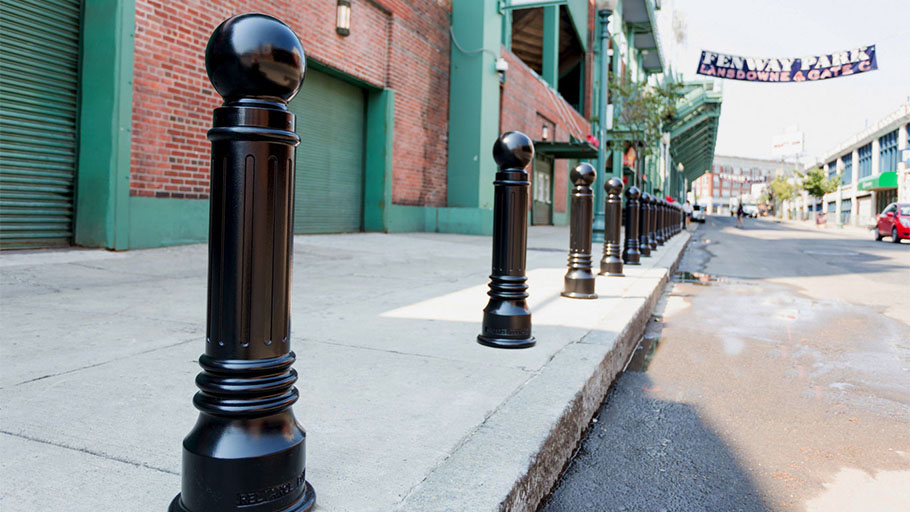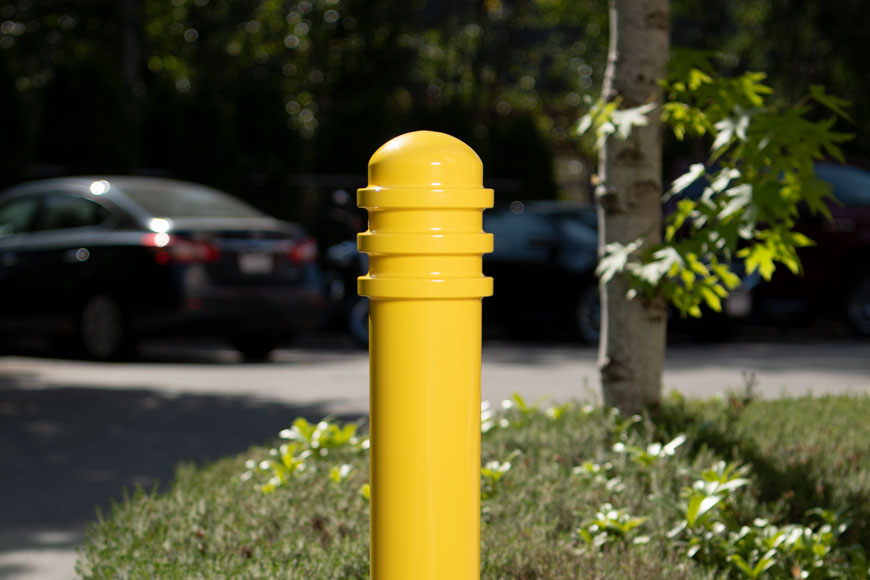A Comprehensive Guide to Tree Grates
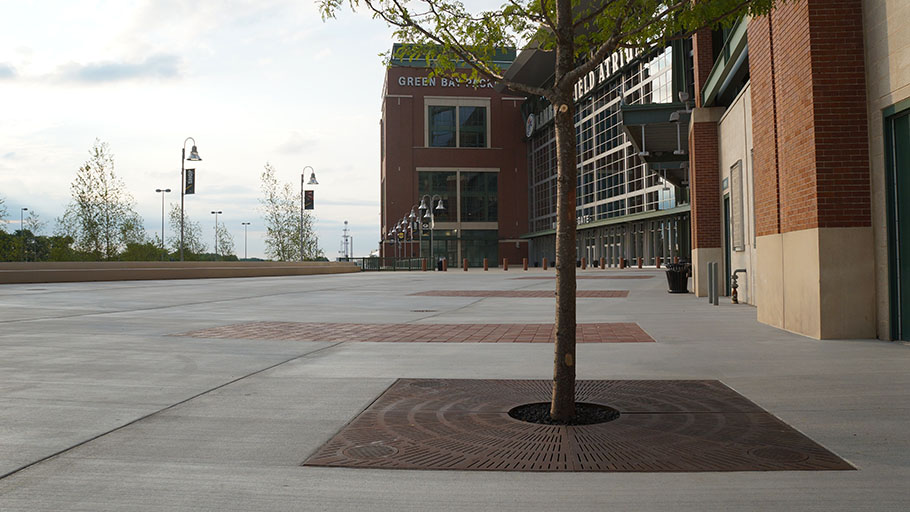
In urban planning, integrating trees into design is a cornerstone for building sustainable and aesthetically pleasing cities. But because trees are living organisms, it is important to protect them and their soil from urban life. To that end, tree grates are essential components that not only preserve trees but also enhance the overall safety and appeal of city walkways.
What are Tree Grates?
Tree grates are protective barriers designed to safeguard trees and surrounding soil in urban environments. Effectively, they are a collar that sits around the trunk of a tree. These metallic gratings sit flush with their adjacent walkways. If properly installed, they play a crucial role in protecting trees, as well as keeping pedestrians safe from tripping hazards.
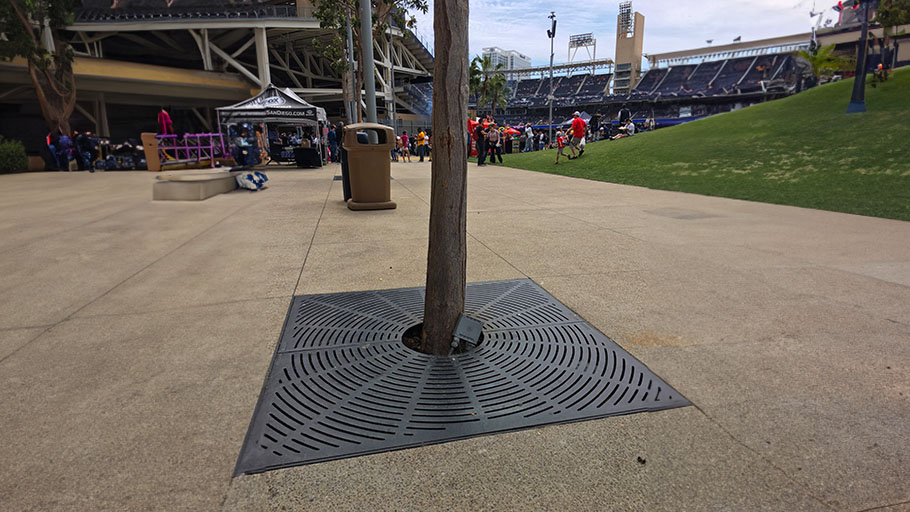
Why Do We Need Them?
As a root management product, tree grates serve two primary purposes, preventing soil compaction to allow for healthy tree growth, and ensuring that roots stay in their rooting areas and don’t damage the pavement.
For pedestrians, tree grates create a leveled surface between the trees and walkways, reducing the risk of injury caused by protruding roots. This also means that tree grates themselves should not become a tripping hazard. Tree grates should be compliant with the American Disabilities Act, which stipulates that gratings located in pedestrian walkways will not allow a sphere more than 13 mm in diameter to pass through. This allows the grates to be safe extensions of the sidewalk for all pedestrians.
In addition, modern tree grates like the R-8871 Solana add to the aesthetics of a street, breaking some of the uniformity of urban spaces.
Why Might We Not Need Them?
While tree grates offer significant benefits, there are instances where they might not be necessary. In less populated areas or locations with minimal foot traffic, the protective function of tree grates may be less critical. Additionally, in natural or park settings where urban design elements are intentionally minimal, tree grates may be considered optional.
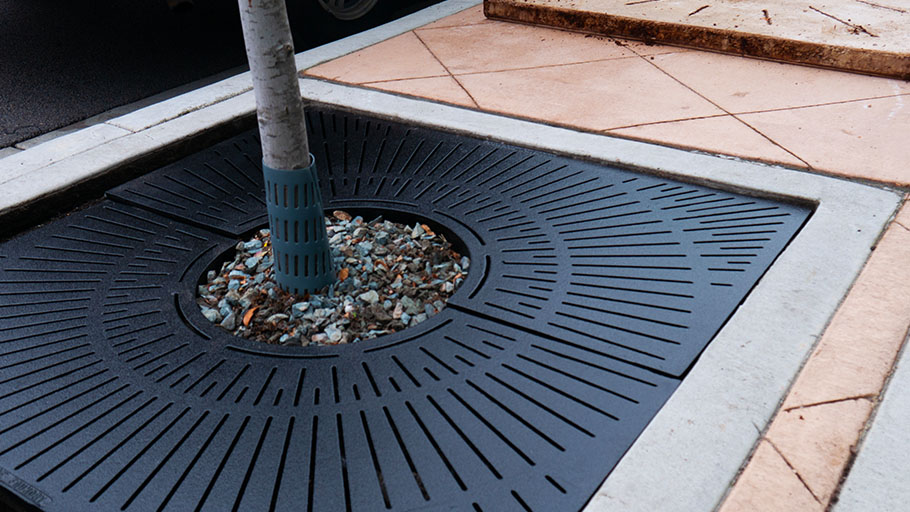
Commonly Used Materials
Tree grates are crafted from durable materials designed to endure weathering and foot traffic. Typically, tree grates favour materials with resistance to porosity and shrinking, providing longevity and robustness in various environmental conditions.
The two primary materials commonly used for tree grates are cast iron, as in the R-8870 Cosmopolitan, and steel, each with its own set of advantages and disadvantages.
Cast Iron
Benefits
- Durability: Cast iron is renowned for its durability, making it capable of withstanding heavy foot traffic and varying weather conditions.
- Aesthetics: Cast iron’s classic and elegant appearance enhances the visual appeal of urban spaces, contributing to a sophisticated and timeless design.
- Rust Resistance: Gray cast iron specifically, develops a natural patina over time when exposed to the elements. While this is caused by a type of corrosion, instead of degrading the material, this layer acts as a protective barrier against rust.
- Resistance to Shrinkage: High-quality gray cast iron is free of porosity and shrinking, ensuring a robust and seamless structure.
Disadvantages
- Weight: Cast iron is heavier compared to some alternative materials, which may impact transportation, handling, and installation.
- Cost: The production of cast iron involves complex processes, which can make it more expensive than some alternatives.
Steel
Benefits
- Strength and Flexibility: Steel frames provide added strength and flexibility, allowing for precise shaping and customization of the tree grate frames.
- Versatility: Steel’s versatility makes it suitable for creating intricate designs and achieving specific structural requirements.
Disadvantages
- Corrosion: While steel frames are often coated to resist corrosion, they may still be susceptible to rust over time, especially in harsher environments.
- Weight: Though lighter than cast iron, steel is heavier than some non-metal alternatives, potentially impacting transportation and handling.
Impact of Material Choice on Longevity and Environmental Conditions
The materials chosen for crafting tree grates play a pivotal role in determining their longevity and performance across diverse environmental conditions. Cast iron, renowned for its durability, ensures exceptional longevity when properly maintained, providing enduring protection for urban trees. Its ability to withstand weathering, stability in varying temperatures, and resistance to expansion and contraction make cast iron a reliable choice for outdoor use.
On the other hand, steel, with its strength and flexibility, allows for precise shaping and customization, contributing to intricate designs that enhance the aesthetic appeal of tree grates. Steel can also offer good longevity, particularly when coated with anti-corrosion materials. However, while steel frames are versatile and adaptable to their installation site, they do require more regular maintenance and protective coatings to resist rust, especially in moist or corrosive settings.
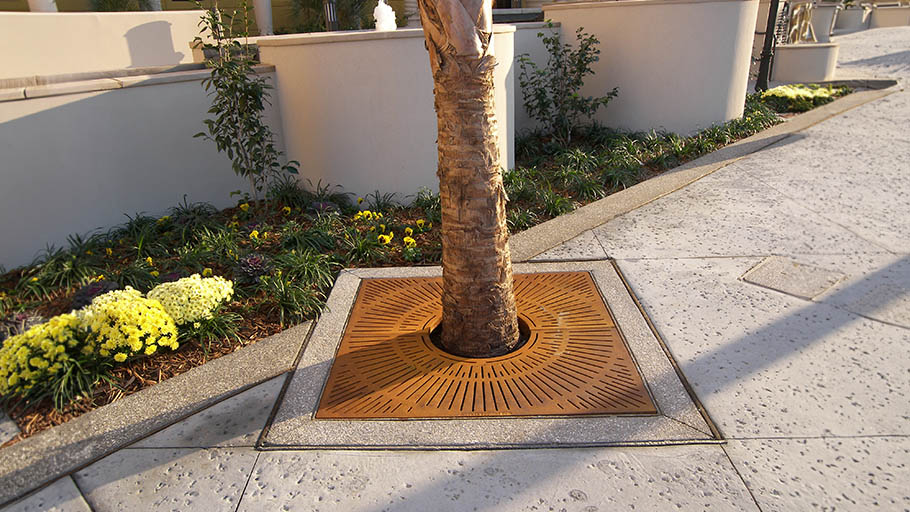
Tree Grate Frames
Tree grates need to be installed on frames that can support them. While most tree grates are made from cast iron, their frames are often constructed with steel. Steel offers added strength and flexibility, allowing for precise shaping of the frame to match the installation site. This combination of cast iron grates and steel frames ensures a balance between durability, functionality, and aesthetics.
Installation of Tree Grates and Frames
Once site plans have been confirmed and reviewed and hazards such as water pipes, gas lines, and underground wiring have been identified, tree grate installation can begin.
The installation of tree grates involves preparing the tree pit and lowering a wood frame into the excavated pit at the correct grade. The assembled steel frame is attached to the wood frame and the grate is placed within the frame. All components are wired together before concrete is poured.
For more details, see our Tree Grate Installation Guide.
Routine Maintenance Tips for Tree Grate Frames
Like other hardscape features, tree grates are subject to many types of weather, daily foot traffic, and a myriad of other abuses. As such, the condition of tree grates can deteriorate quickly. This can be costly and dramatically reduce curb appeal, but it also endangers the grated trees. This makes maintenance an important responsibility.
Maintaining tree grate frames involves regular inspections and cleaning. Routine tasks include clearing debris, checking for signs of wear or damage, and ensuring proper alignment. Frames can be cleaned with mild detergents, and any loose or damaged components should be addressed and, if needed, replaced right away.
Tree grates may experience common issues such as rust and general ‘wear and tear’ over time. To address rust, regular cleaning and the application of anti-corrosion coatings are recommended.
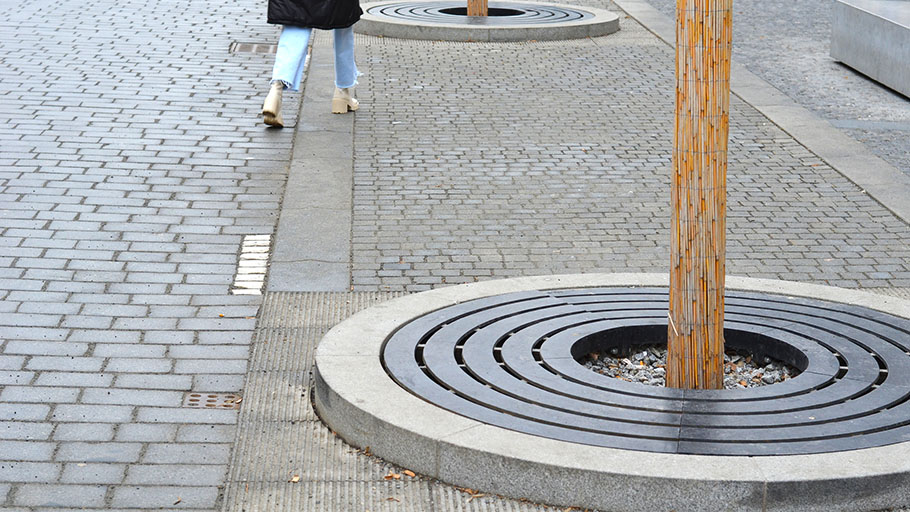
Expandable Tree Grates
As trees grow, tree grates need to be able to accommodate the increased trunk width or risk damaging the tree as it grows against the grate. Fortunately, tree grates can be designed to expand the opening diameter as tree trunks grow bigger. These are known as expandable tree grates.
Expandable tree grates have removable inner center rings, allowing the tree grate opening to be enlarged in increments. When the center rings are removed, the tree grate opening diameter widens enough to house a larger tree trunk. By allowing the removal or replacement of the center ring as the tree grows, these grates ensure that the streetscape remains beautiful for decades.
Related: How To Expand Tree Grates
If you need to change out an older growth tree, expandable tree grates are a useful hardscape feature. After removing a more mature tree and replanting with another younger tree, the center rings can be added back to the grate to appropriately fit the new tree. Over time, as the young tree grows, the rings can be removed again to expand the opening diameter when needed.
Planning Ahead with Expandable Tree Grates
As planners anticipate tree growth and streetscape maintenance, ordering tree grates with optional rings becomes a strategic decision. It is important to plan and understand the expected size of your tree species so the expandable grate has the capacity to accommodate its growth as it matures. You may not even need an expandable tree grate depending on the growth of the tree.
If expandability is required, the rings can easily be added or removed, increasing the opening size during higher growth phases or accommodating the planting of new trees with different trunk sizes. This flexibility ensures that the tree grates remain both functional and visually appealing over the years.
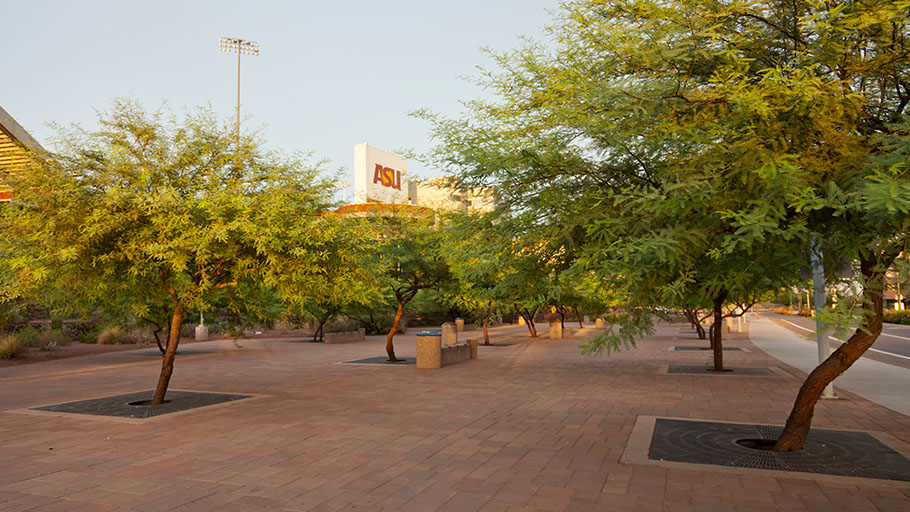
When navigating the intricate landscape of urban design, the inclusion of tree grates emerges as a thoughtful and multifaceted solution. Beyond their protective role for trees and soil, these grates contribute to the creation of inviting and accessible public spaces. By understanding the materials, installation processes, maintenance strategies, and features like expandable grates, it becomes easier to make informed decisions that ensure the longevity of sustainable, aesthetically pleasing urban spaces.










